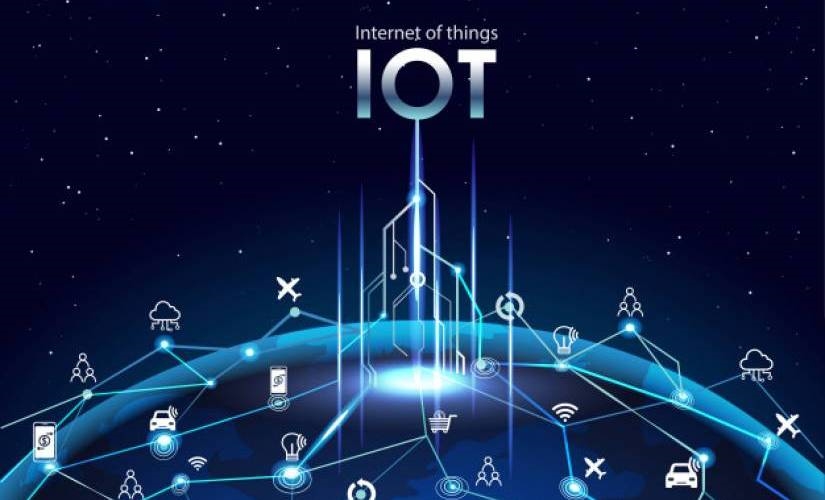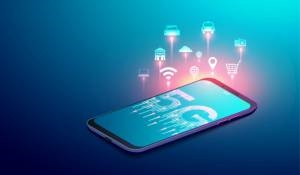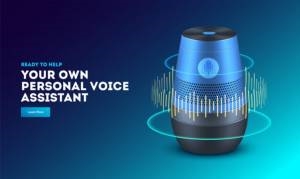What to Expect from a Modern IoT Platform in 2019
What to Expect from a Modern IoT Platform in 2019

The Internet of Things (IoT) is growing at an unprecedented rate and can help businesses deliver new opportunities and be successful in the long run. The promise of a vibrant future that IoT holds can be deciphered from the following facts:
- 7 billion active IoT devices on a global level (IoT Analytics report)
- The number of IoT devices that are active is expected to grow to 10 billion by 2020 and 22 billion by 2025. (IoT Analytics report)
- By the end of 2021, the internet of things and is expected to be worth 520 billion U.S. dollars. (Statista)
Certain innovative IoT trends are already giving businesses the opportunity to digitally innovate itself. The Internet of Things has a lot to offer to help businesses gain the edge over competitors. If you’re a business wanting to leverage IoT to the core, you must know about everything that a Modern IoT platform should have in 2019.
Artificial Intelligence should be incorporated within IoT.
As mentioned above, the Internet of Things has grown enormously over the past few years. There are over 17 billion connected devices worldwide. The majority of them work on a single small processor along with a tiny portion of memory. In short, IoT has already become omnipresent.
The Internet of Things can be further empowered by incorporating advanced artificial intelligence into it.
This, in turn, would facilitate IoT to build excellent opportunities for data analysis and interpretation. For instance, with artificial intelligence (AI) incorporated IoT, a self-driving car would not only safely drop a person, but also leverage the transit data to give accurate traffic pattern prediction. As a result, it would help in the construction of more efficient infrastructure and roads in the future.
A manufacturing example would be that of a factory that makes use of IoT-connected assembly lines.
It would assist them in reducing the rate of manufacturing errors in the fabrication process. All in all, putting artificial intelligence and machine learning into IoT devices has enormous potential benefits. Big brand names such as Amazon, Google, Microsoft, IBM, etc. are already making extensive use of AI in their IoT devices and extracting the best out of it.
The implementation of AI in the IoT space with self-driving cars has made heads turn.
Tesla, for example, has introduced machine learning-based self-driving cars with limited autopilot capabilities. What works here is skilled programming that enables the makings of a self-driving car, which understands the rules of the road and manages all obstacles efficiently.
However, there are certain shortcomings. The most significant issue being the inability of programmers to program for every possible variable that happens when other drivers are presented into the mix. A Tesla car gathers real-time data from other Tesla cars present on the road, thus making the presence of any new variable seamlessly easy to learn and share with other connected vehicles – helping secure autopilot mode for Tesla drivers.
There should be a rise in industrial IoT & digital twin technology.
Industrial IoT enhances the efficiency and productivity of business through extensive data analysis and integration. In fact, including industrial IoT within the IoT framework add to its growth at an exponential rate. Moreover, the manufacturing industry can also leverage the most out of it. It doesn’t only make the manufacturing sector effective but also reduces its risk factors while enhancing its profitability.
Another critical aspect that a modern IoT platform must have is the use of digital twin technology. According to a survey by Gartner, within 3-5 years, billions of things will see its representation through digital twins.
Digital twins is a powerful software that works as a virtual model for a particular product, process or service.
Incorporating it with IoT will reduce the gap between the physical and virtual world.
Further, it would allow a thorough analysis of data while monitoring the systems. Monitoring, in turn, would subside the problem even before its occurrence. Monitoring controls would also prevent downtime, provide new opportunities and facilitate future planning through simulation.
These three benefits of preventing downtime, providing new opportunities, and driving future planning with simulation make this VR world highly imperative for businesses to adopt the amalgamation of digital twins and IoT. Moreover, being amidst Gartner’s Top 10 Strategic Technology Trends, digital twins technology is here to stay. Hence, businesses who do not incorporate this strategy will lose out to competition big time.
Incorporation of General Data Protection Regulation (GDPR)
IoT devices collect a lot of data.
So, it becomes critical to incorporate IoT related security standards. It can be done by implying the General Data Protection Regulation into it. GDPR works as a regulation for the handling of personal and sensitive data. Therefore, businesses which want to run successfully should keep this aspect in mind when using any IoT technology. To put it in other words, a transparent and clear disclosure regarding the collected data can do the needful.
The IoT developers should take care of a standard level of compliance and security at various levels.
These levels include data encryption, different means of verification, active consent, etc. In short, the main aim of the IoT devices or any software used by businesses should be a legitimate collection of data. It should be done in a way that makes its accessibility, processing as well as storage to a minimum.
Remember, if the intention behind the collection of customer data and the way it is collected is made clear — it will boost the confidence of customers in your business and give you an edge over competitors.
The use of cloud IoT solutions
The popularity of cloud solutions for IoT is on an all-time high.
Amazon’s AWS and Microsoft’s Azure cloud services were found to be the top choices for cloud development of IoT products at the 2018 IoT Developer survey. These two giants have the marketing capabilities, infrastructure, and accessibility needed for the immediate release of any new IoT device.
Microsoft’s Azure IoT central platform which was released in 2018, facilitates safer communication amidst devices and the cloud.
It basically works as a software plug and play solution which connects IoT firmware to the cloud. Therefore, including Cloud Solutions within your IoT device can work wonders for your business, and investing in it can help a company extract its potential to the fullest.
Achieving momentum with edge computing.
Edge computing works as a distributed and open IT infrastructure. It processes the data near the edge of the network where the data generation is taking place. It doesn’t rely on a centralized data-processing warehouse. Instead, it focuses on decentralized processing power and enables mobile computing and the Internet of Things technologies.
The edge computing facilitates the processing of data by the device itself.
It doesn’t work on the data transmitted through a data center, making it critical for the proper functioning of IoT devices. You should remember that cloud computing isn’t always an option. There are situations where constant connectivity isn’t possible. When a continuous connectivity isn’t possible — then edge computing can come in handy. Because, it has the potential to process, analyze and execute data even when away from full network coverage.
Microsoft, Google, Amazon, etc. are making significant use of edge computing.
It doesn’t only work as a great computing substitute for cloud technology but can also bring it anywhere securely and safely. Therefore, if you wish to achieve momentum through your IoT strategy, incorporating edge computing can do wonders for your business in 2019.
The same tech is used with Amazon’s AWS IoT Green grass service.
It makes use of edge devices and gives developers the power of using Lambda functions. The Lambda function, in turn, allows developers to make use of machine learning while calculating tasks within IoT devices. So, it is quite clear that edge computing has a lot to offer to IoT devices and should undoubtedly be an integral part of any modern IoT platform.
Including 5G standards.

Source: Freepik
Incorporating 5G standards within IoT devices increases its potential to a significant level.
Besides reducing the latency, it enhances the reliability of mobile communication with embedded devices. With reduced latency, the connected IoT devices will facilitate sending and receiving the data in a faster way. It would further allow seamless analysis and management of data.
An application or service that requires rapid and instant computing within a brief period can extract huge benefits from this impeccable technology.
Look at the strides being made in the transportation sector to logistics and infrastructure, and every industry can leverage 5G standards and pave new avenues of success. Therefore, if you possess a concrete business plan at hand, you should consider deploying this high-end technology within your modern IoT platform.
Using LPWAN for IoT sensor
LPWAN or Low-Power Wide-Area Network can increase the potential of IoT enabled devices.
The LPWAN works with ease for any small device that requires high operating lifespan situated in remote locations. Tiny sensors that have the ability to function with a low transmission rate of LPWAN can successfully integrate itself with LPWAN connectivity. With devices connected through LPWAN predicted to reach more than a billion in 2023, the importance of incorporating IoT into your business becomes all the more imperative.
Making use of Voice-enabled Internet of Things

Source: Freepik
Voice-enabled assistants have shown tremendous growth in recent years.
Apart from the smart home automation market, it is also expanding its wings in the industrial sector. It does not only utilize the hands-free control and rapidly tracks the processes but, likewise, lowers the costs of maintenance and management. The careful management, in turn, provides businesses with an opportunity to include easy-to-use communication method between end users and their respective devices.
Take a look at the growth in the voice assisted devices. Where are these devices doing the most good for businesses?
With the use of voice assistants predicted to grow 1000%, reaching a whopping 275 million devices by 2023, it surely is a dominating factor in shaping the way a business operates and functions. From Alexa to Google Home, these voice-enabled IoT products are working as a driving force and helping businesses be successful – one IoT strategy at a time.
Involving innovation to complex IoT solutions
Incorporating IoT with other tech innovations can facilitate the working of various technologies together. As a result, it can help businesses achieve specific goals seamlessly. Take a look at a few innovative technologies that are helping IoT become more high-end and top notch.
1. Blockchain
Blockchain facilitates the protection of data from potentially unsafe devices. It works as a digital ledger for saved information and distributes the data throughout the plethora of devices connected with the chain. As a result, it makes it impossible to make any accidental or malicious changes to the data.
Incorporating Blockchain within IoT devices will thereby, make any business more reliable and secure.
Blockchain is the reason many of the IoT devices are already including Blockchain within it. In fact, 20% of IoT devices are having some sort of Blockchain service incorporated into its data collection method. So, it wouldn’t be wrong to say that Blockchain has found its widespread use in IoT devices.
2. WebRTC
Known as Web Real-Time Communication, WebRTC is an open source project that facilitates the deployment of two-sided communications between IoT products. It does so through a simple browser without any requirement of specific tools or plugins. WebRTC has brought a lot of features and functions on board with lesser development time, efforts as well as auxiliary tools.
Here’s an example of Amazon’s newly developed Sensor and Alexa APIs that will help make this concept clearer.
It not only allows seamless communication with the end user but, also helps the users connect cameras, doorbells, and Alexa-enabled Echo devices. In conclusion, incorporating technologies like these are making IoT devices easy to function without any extensive effort.
5 Industry Problems that the Internet of Things can Help Solve in 2019
Just like the internet has revolutionized the way we think, feel, behave, live and work, the Internet of Things and its concept of a ‘connected world’ has made the world a much smaller, safer and smarter place. Not only that, IoT promises to deliver a much viable solution for industry problems such as Healthcare, Agriculture, Energy Conservation, Road Traffic Management, and Security Management, to name a few.
1. Healthcare Crises
IoT is helping cater to medical emergencies like never before.
Like never before we can now facilitate the monitoring of patient’s health status by healthcare professionals. Assistance to cardiac emergencies through a connected medical facility has already been implemented. In an IoT enabled system, any health crisis of a patient connected to the heart monitor can automatically trigger an alarm at the nurse station, saving precious lives.
2. Agricultural Issues
Although agricultural harvests rely heavily on natural elements and conditions, IoT can help predict these occurrences for farmers and agricultural workers, to plan and take action accordingly. Moreover, IoT-powered temperature sensor can be harnessed by agriculturists to turn on sprinklers, when the temperature reading crosses the specified limit.
3. Energy Conservation
With the increasing depletion of natural resources, energy conservation with the help of the Internet of Things has created options for smart home automation. Having these functions have empowered homeowners to not only conserve energy but also monitor their daily, weekly, and monthly usage.
4. Road Traffic Management
With cities across the world dealing with traffic congestion at peak hours, IoT can be a great enabler. Traffic regulators, ambulances, etc. can take the help of connected devices linked to IoT sim cards such as GPS devices, smartphones, cameras, traffic lights, and cars to help monitor traffic patterns and keep drivers informed of traffic situations.
5. Security Management
Businesses have been increasingly relying on connected systems like the Internet of Things for managing the security of their workplace premises and buildings. One of the most favored being IoT sim cards that can be connected to sensors such as footprint sensors, biometric sensors, facial recognition, etc.
How to Choose the Right IoT Development Company
It is recommended that you choose an experienced mobile app development company.
Merely saying that you need an experienced mobile app development company doesn’t say it all. You have to have a companyt that has a proven expertise with IoT development and open source IoT frameworks. IoT solution mostly comprises of web software. Unity of hardware and software is the base of any IoT development, and so, it is advisable to go with a firm that is strong in web development and web security.
Make sure that your chosen company tests the projects delivered by them and maintains strict deadlines.
The provider you choose should be flexible enough to take the feedback constructively and execute the revisions requested.
Wrapping up
Including the strategies as mentioned above within an IoT platform is going to help businesses grow substantially. The IoT sector is undergoing a lot of changes. These are a few of the many trends that can help IoT devices take a modern approach. It is just the start of the unprecedented growth of the IoT sector in 2019.
The time is not far when the use of IoT devices will become inevitable, thereby, making the world interconnected in every possible way.
Therefore, it’s high time that organizations leverage the various advantages of the unique opportunities and abilities that IoT devices have to offer. It would help businesses include more features, functionality along with accelerated productivity within their IoT connected ecosystems.
In conclusion, with the right goals, modern approach, high-end plans, and tools, IoT can reach new heights of success in no time. It can provide practical value to both the customers and organizations for being successful in the long run of business while having the edge over competitors.
The post What to Expect from a Modern IoT Platform in 2019 appeared first on ReadWrite.
(47)

